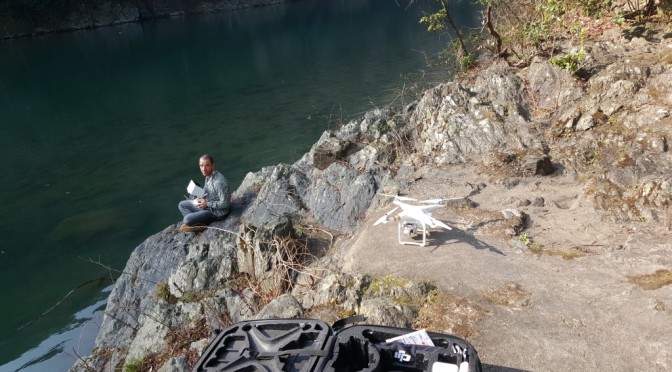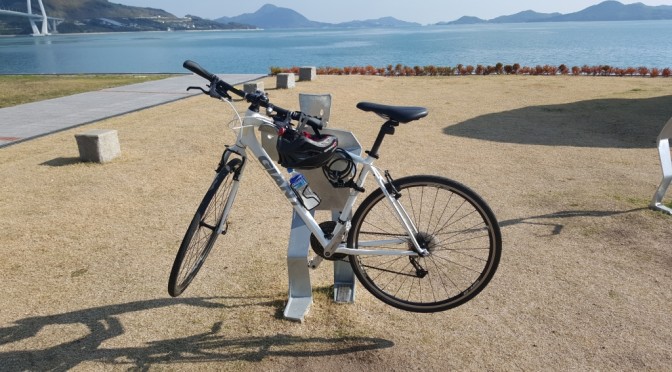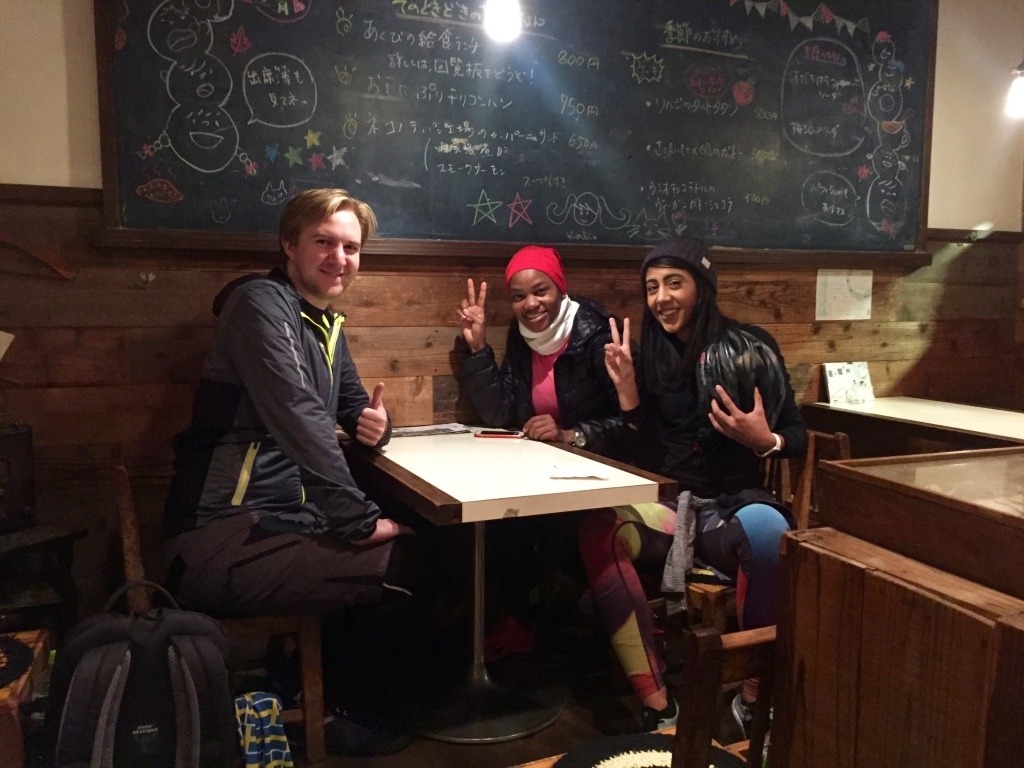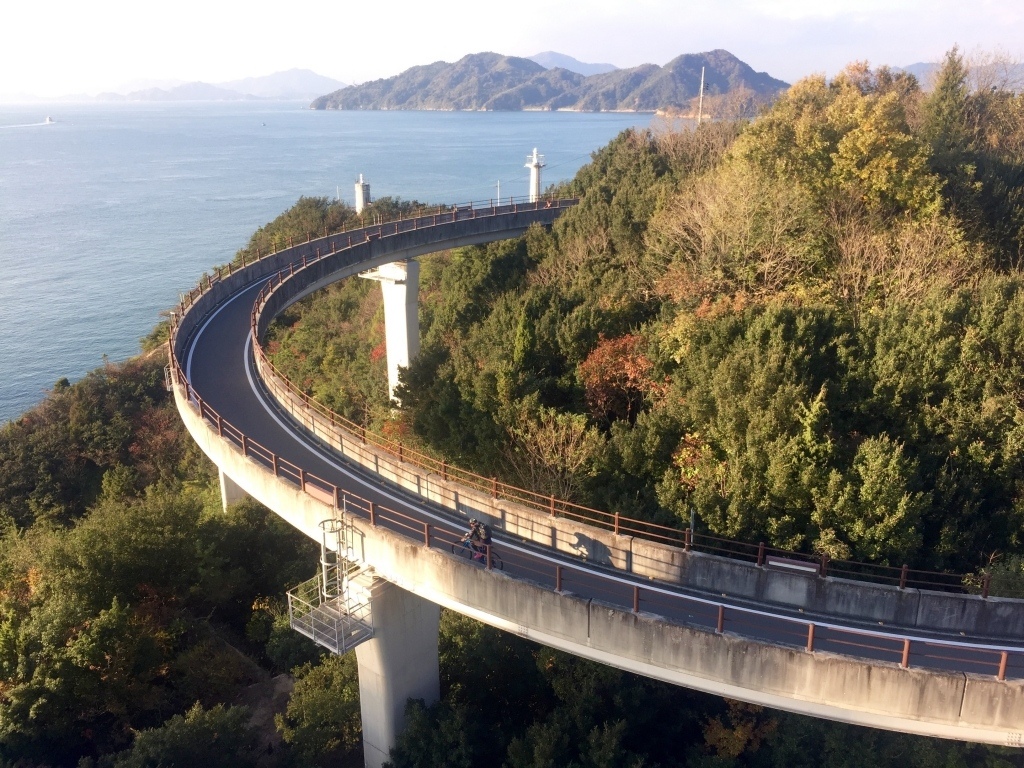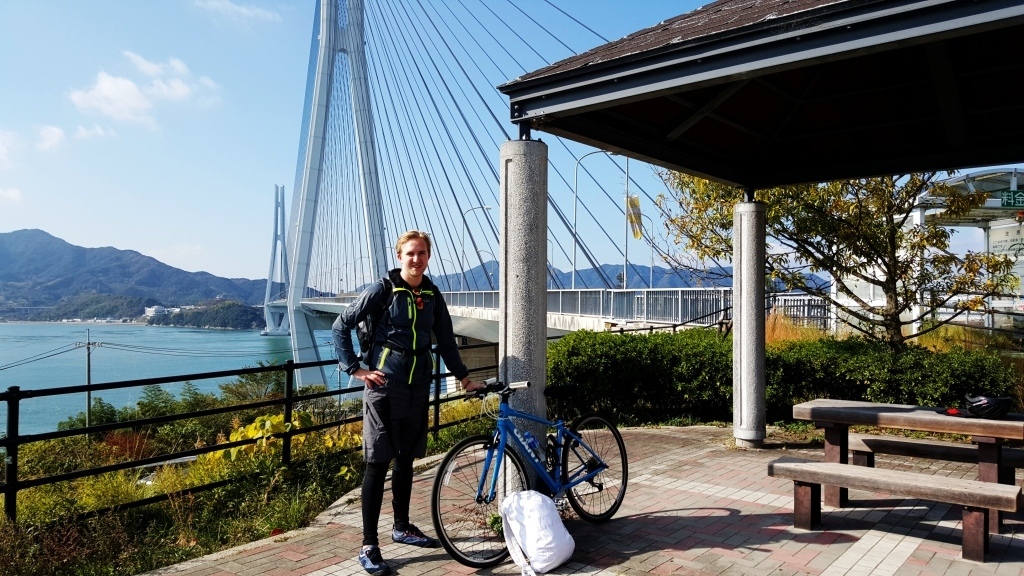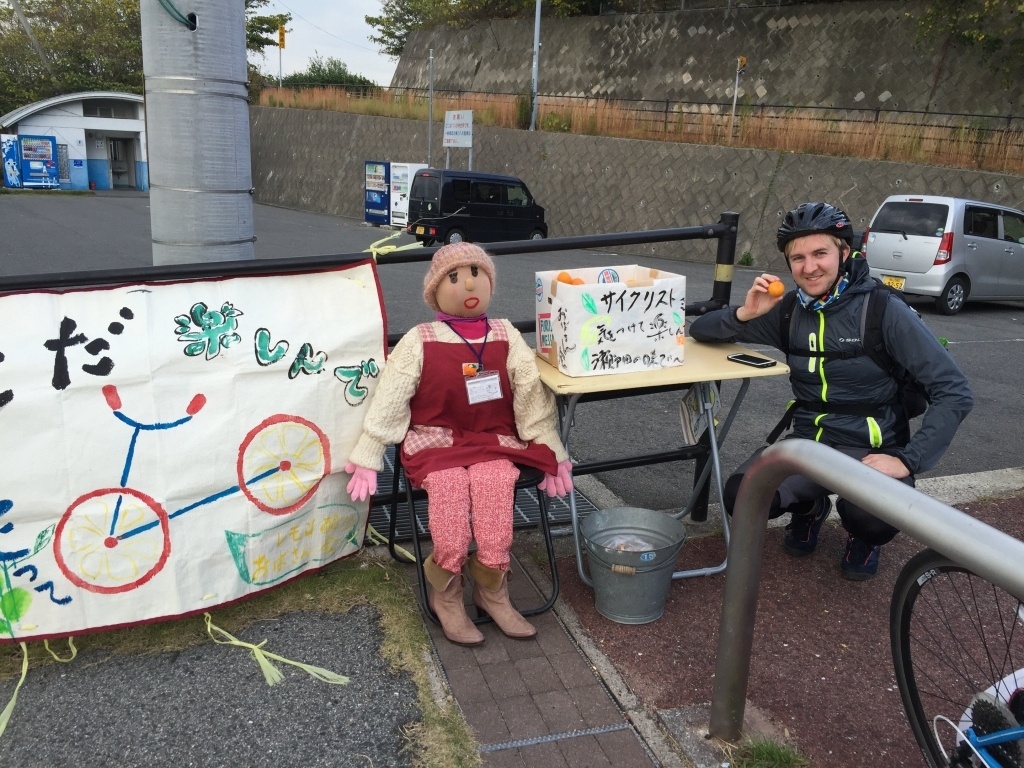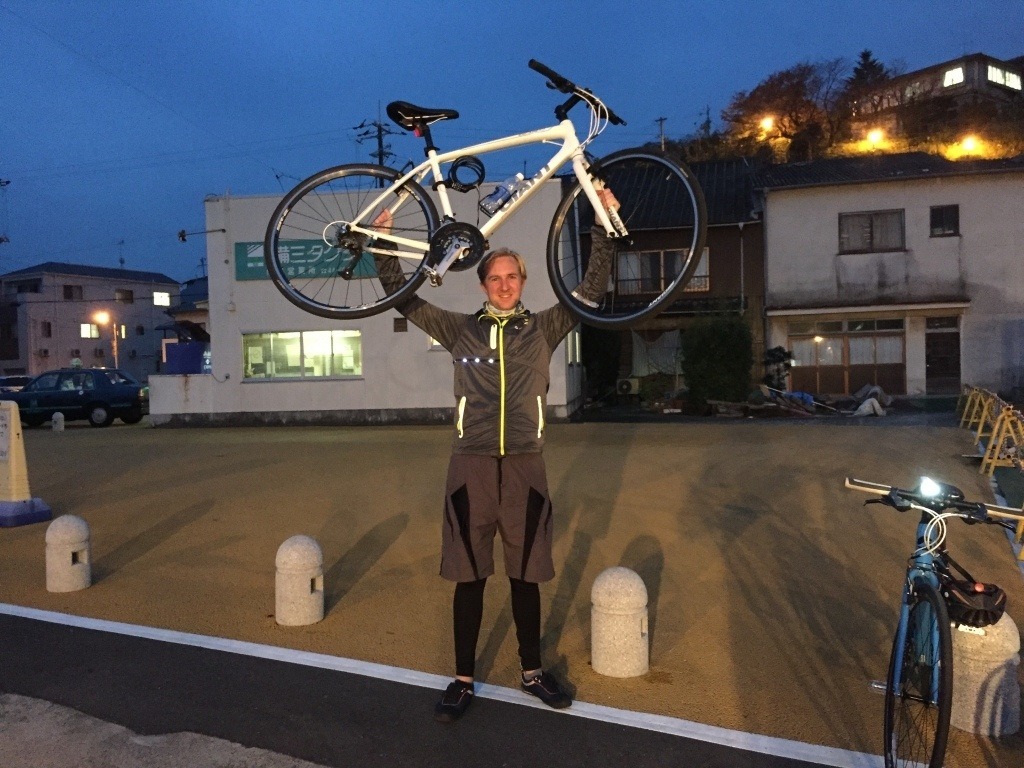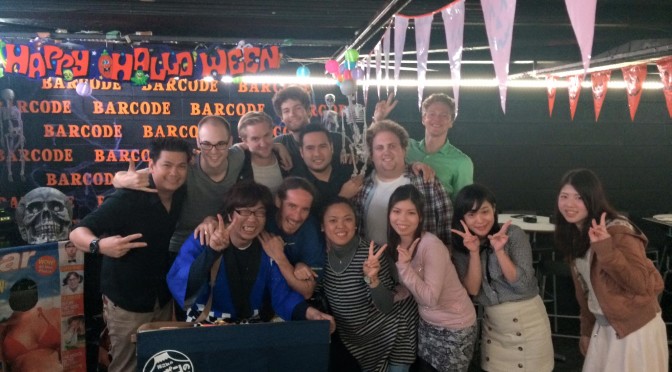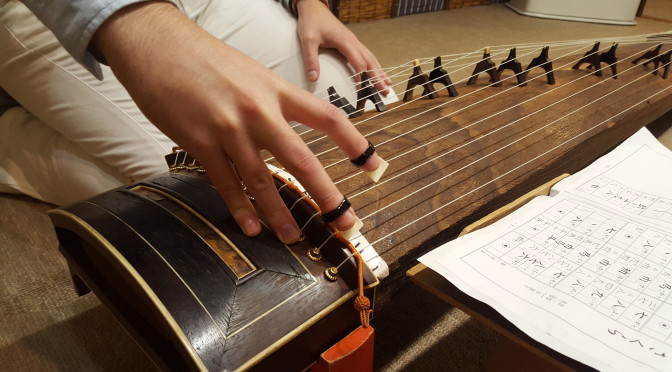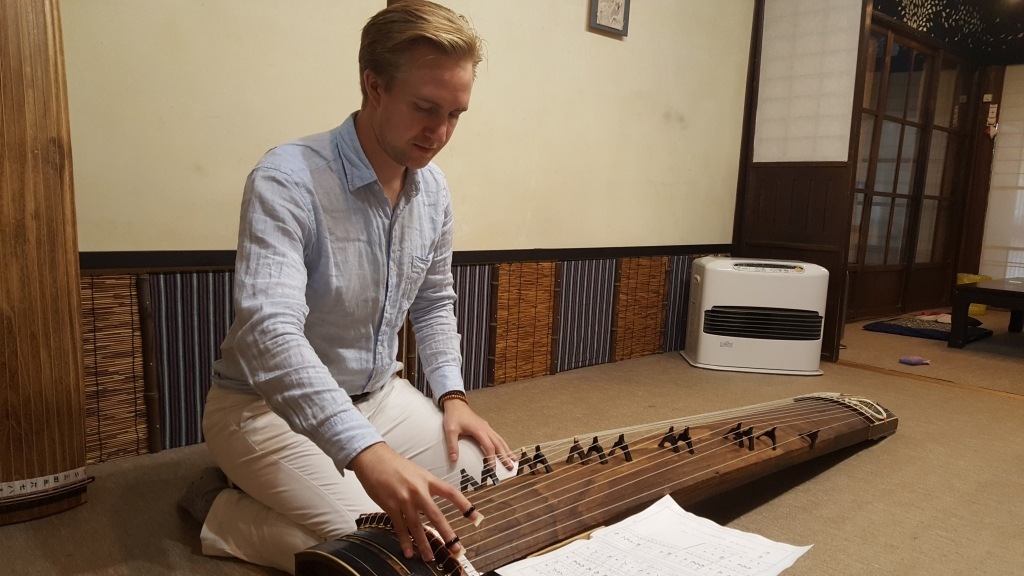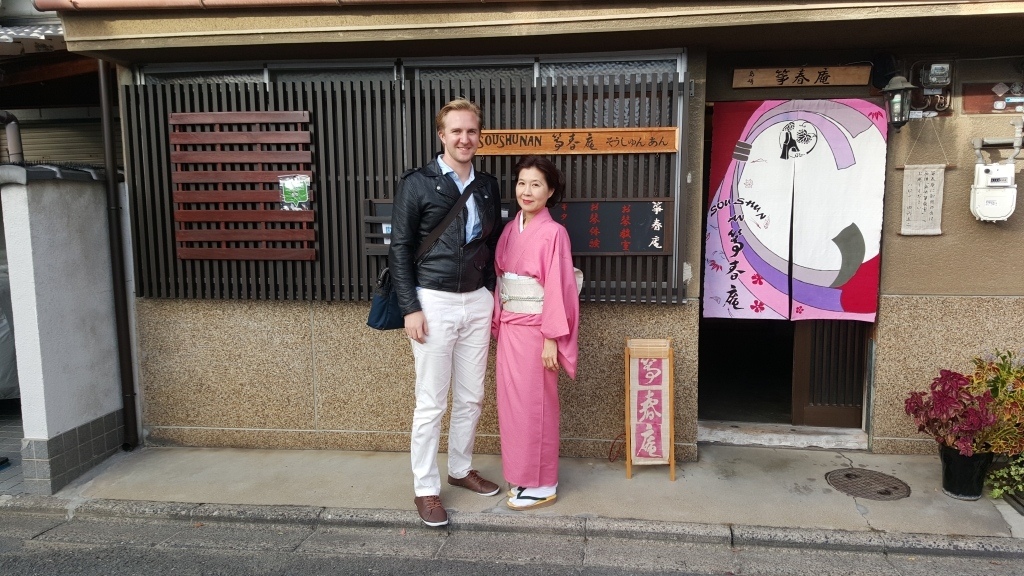Interested in cycling? A few weeks ago, two friends and I went on quite a long cycling trip from Onomichi in Honshu (the largest and most populous island of Japan) to Imabari in Shikoku (Japan’s smallest major island), famously known as Shimanami Kaido.
The trip took four days, and covered 160 kms by bicycle in total, and began with us setting off from Kyoto on a Monday around 12 pm and arriving in Onomichi at around 5 pm. We rented bicycles from the “Giant store in Onomichi” which we had reserved in advance, and rode them to our guesthouse “Anago-no-Nedoko”. Apart from being conveniently close to Onomichi Station, the Giant Store, and the start line of the cycle route, Anago has a special charm about the way it all fits so perfectly in to an eel-like alley. Early Tuesday morning, day 2, we set out after having breakfast at the guesthouse and boarded a ferry to the first small island, marking the start of the 80km route to the other side.
From thereon we cycled through six islands each with breath-taking scenery, crossing the ocean along six bridges, each an engineering marvel.
Upon arriving at Imabari (Shikoku), we parked our bicycles overnight and then took the train to Matsuyama with the goal of going to “Dogo-onsen“, said to be the oldest bathhouse in Japan. We first checked in at Cinnamon guesthouse – also super cosy and convenient – and just as we were finally about to leave for Dogo-onsen to soothe our aching muscles, one guest told us that it was closed that day! It was later revealed that the famous bathhouse closes on just one day each year for cleaning and it just so happened to be the day we decide to go there. What are the odds?
On Wednesday, Day 3, we set out early from Matsuyama and took the train back to Imabari to collect our bicycles for the 80km return trip. On the way back we picked up speed to avoid the upcoming rain, but still managed to take a few breaks, including one at the kind Mari-san who gave us the sweetest mikan (Japanese mandarins) for free.
We also made a quick pit stop at an island called Michikajima, which is officially the tiniest Island I’ve had the fortune of exploring. By 6pm that day we reached our end destination, feeling super chuffed at ourselves, and stayed for one more night at Anago guesthouse before making our way back to Kyoto on Thursday, Day 4, just in time for school.
This definitely goes down as one of my top 5 experiences in Japan! Shimanami Kaido is incredibly beautiful, even during winter, and I highly recommend you try it!
サイクリングに興味ありますか?この前、友達二人と少し長めの自転車の旅をしました。本州の尾道から四国の今治まです。
この自転車の旅はトータルで4日間。月曜日、京都から電車で12時に出発し、午後5時ぐらいに尾道に到着しました。”ジャイアントストア尾道”で事前予約したバイクをレンタルし、アナゴというゲストハウスに泊まりました。二日目、火曜日の早朝に朝食を済ませ旅へ出かけました。ゲストハウスの近くにあるフェリーに乗って、最初の小さな島のトレイルからスタートしました。
今治に着き、松山行きの列車に乗って、目的地の道後温泉へ行きました。(日本一の古い温泉)。シナモンゲストハウスにチェックインして、温泉へ向かおうとしたとき、ゲストハウスの他のお客様に「今日、道後温泉は閉まっているよ」と言われました。その有名な温泉は一年一日大掃除をするそうで、私たちはちょうどその日に着きました! なんてこった!
三日目は、松山を早朝に出発し、今治に置いたいた自転車のもとに行きました。帰り道は雨が降りそうだったので、少しスピードアップして、短い休憩をとりながら帰りました。途中、まりさんという優しい方からみかんの差し入れをもらいました。尾道まで行ったとき雨が降り始めました。私たちはまた同じゲストハウスに泊まって、四日には京都に帰りました。
この旅は日本のベスト5に入る経験となっています!しまなみ海道は12月でも信じられないぐらい美しいものでした。

